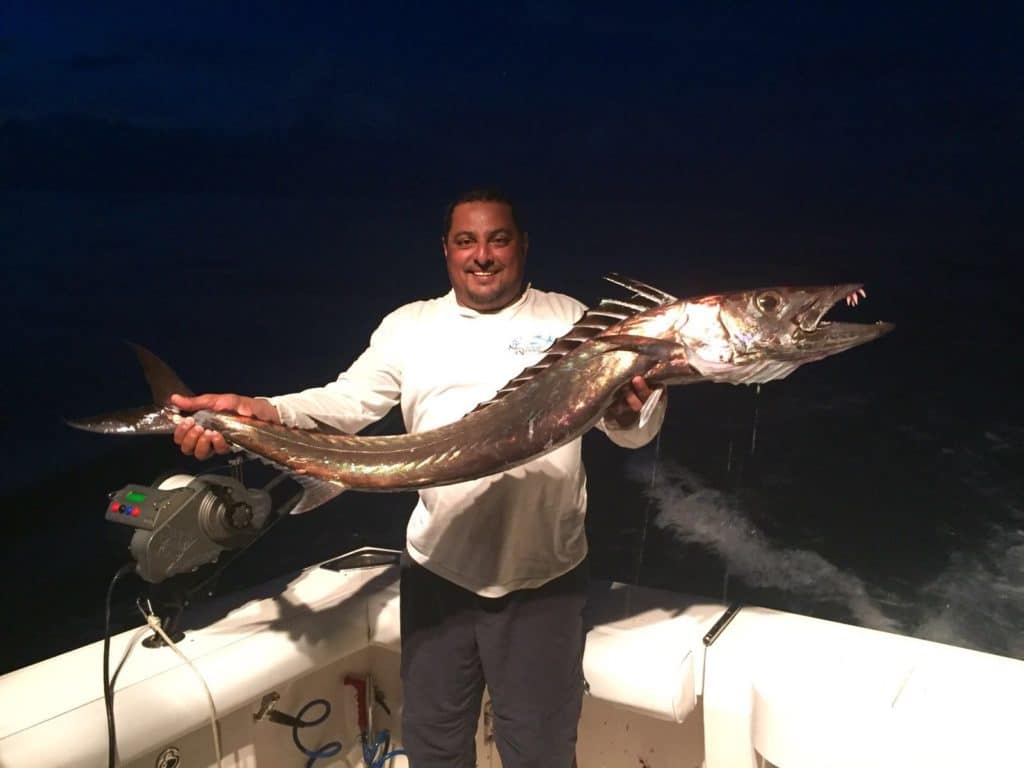In each issue of Sport Fishing magazine, a panel of five international expert ichthyologists identifies unusual and often amazing fishes in photos submitted by readers. Find out what they are and learn fascinating facts about them.
Mouthwatering Marble
QUESTION: We caught this fish while deep-jigging near Key West in about 250 feet. I think it’s a species of grouper but have no idea which. No one we asked down there could identify it, so it must be pretty rare.
Ray Douglas
King Sailfish Mounts
Pompano Beach, Florida
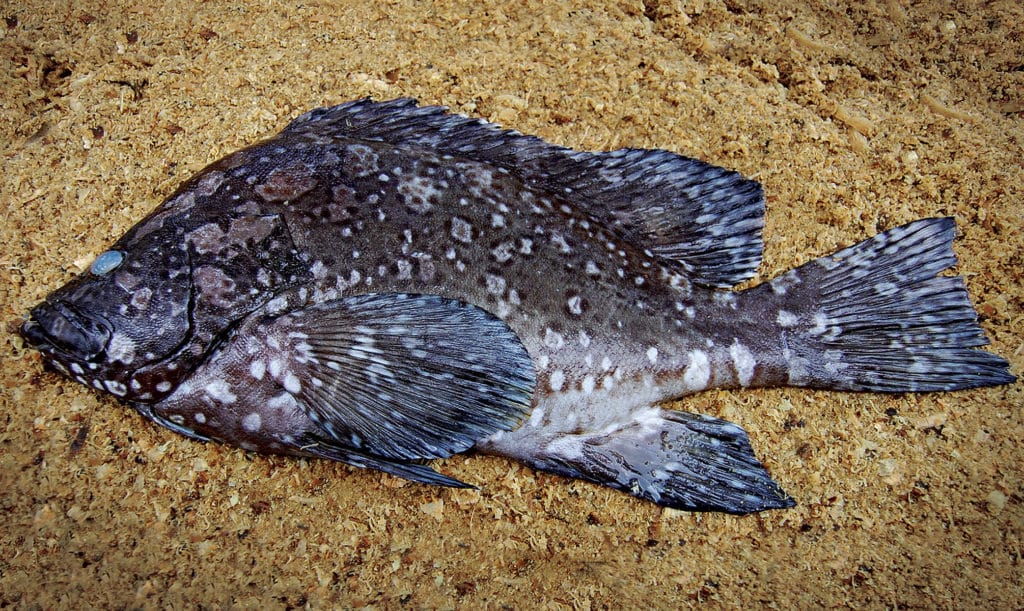
ANSWER: Ray, you caught a marbled grouper, Dermatolepis inermis (which some ichthyologists place in the genus Epinephelus). This species ranges from North Carolina to Brazil, including the Gulf of Mexico and Caribbean Sea, at depths from 10 to more than 1,000 feet. However, it is not common at any depth and is considered “Near Threatened” by the International Union for the Conservation of Nature. The marbled grouper attains a maximum reported size of approximately 3 feet. The IGFA world record is 30 pounds, 6 ounces, from the Flower Garden Banks off Texas. It’s excellent table fare but doesn’t often appear in markets due to its rarity.
— Ray Waldner
When Trevallies Go Coastal
QUESTION: While fishing an area of reefs in about 150 feet of water in the Seychelles, I caught this trevally. I know there are lots of species of trevallies — which is this?
Frank Yerich
Houston
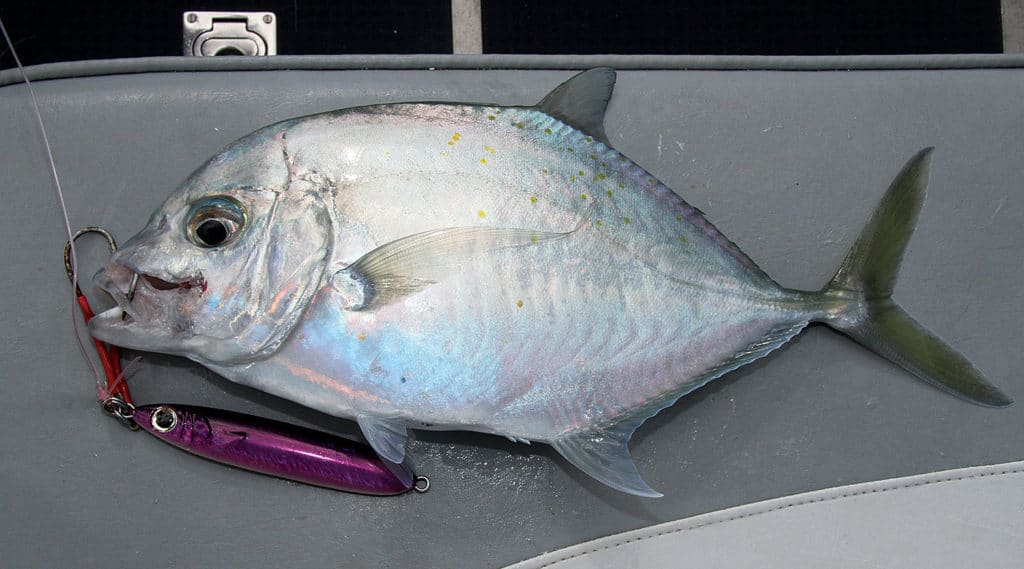
ANSWER: What you have there, Frank, is a quality specimen of coastal trevally, Carangoides coeruleopinnatus. Also known as onion trevally, Japanese trevally or bluefin kingfish, this species occurs throughout the tropical Indo-Pacific from eastern Africa, as far north as Japan, and south to Australia. Like other jacks from the family Carangidae, this species has a line of scutes along the caudal peduncle (narrow area just ahead of the tail). Besides the fact that they grow to around 16 to 18 inches long, relatively little else is known about the life history of this species. Despite their name, coastal trevally are rarely encountered close to shore as adults, instead tending to inhabit offshore reefs to depths of around 150 feet. Juveniles, however, are occasionally encountered in estuaries and shallow bays, where they feed mainly on planktonic organisms including shrimp, small fish and squid. Immature coastal trevally have a long filament trailing from the second dorsal fin and several dark vertical bands, which fade as the fish mature. Coastal trevally have a shorter body compared with most other similar-size trevallies, and their mouth is relatively soft, as shown by the hook damage in your photo. The softer mouth of this species is thought to be one of the reasons why they tend to feed on smaller prey compared with other trevallies. (My thanks to Jeff Johnson from Australia’s Queensland Museum for helping to confirm the identity of this fish.)
— Ben Diggles
Sharp Shark
QUESTION: I caught this small shark (about 3 feet long) off Fort Pierce, Florida. I don’t think I’ve seen one like it before. I’ve seen white spots only on spiny dogfish. This shark’s teeth looked jagged and large. Can you help with an ID?
Capt. Tim Simos
Fort Pierce, Florida
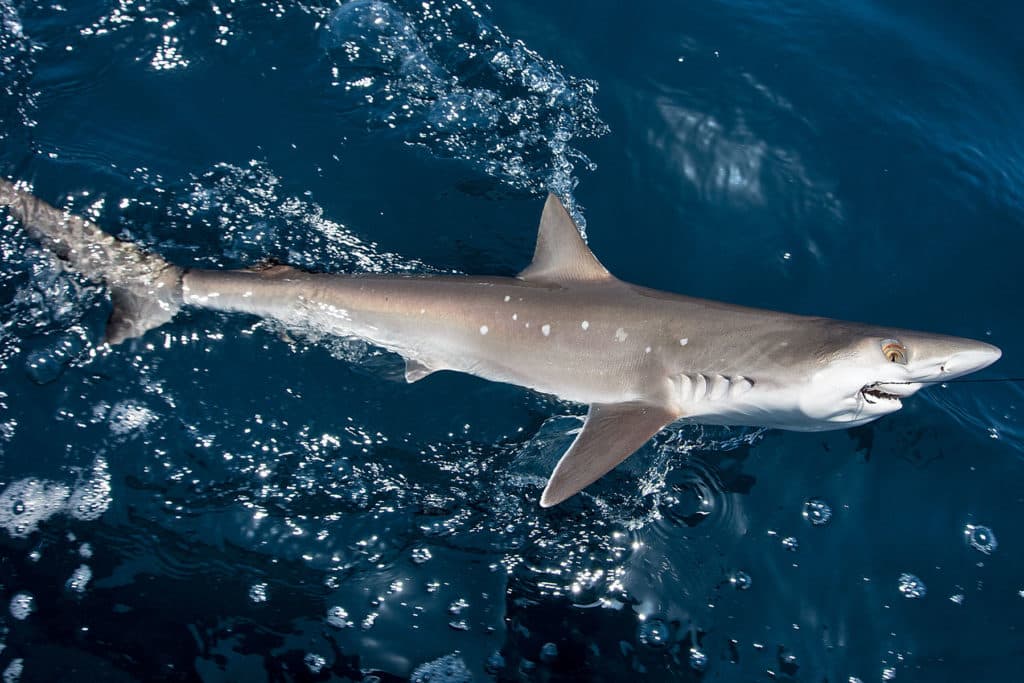
ANSWER: Your shark’s long, pointed snout, white spots, and the area where you caught it give away its identification, Tim. It’s an Atlantic sharpnose shark, Rhizoprionodon terraenovae. This relatively small species grows to a maximum length of not quite 4 feet and is one of the more common coastal sharks, although it also occurs in offshore waters to depths of several hundred feet. Its range extends from Canada through Honduras, including the Gulf of Mexico, but it’s rare north of North Carolina. There is some question whether the Caribbean sharpnose shark, R. porosus — which is found in the Bahamas and Caribbean region and from Honduras to Uruguay — is a distinct species or merely a subspecies of the Atlantic sharpnose. The Atlantic sharpnose is sometimes consumed and is reported to be very good eating. However, as with most sharks, it’s best to soak fillets or steaks in chilled brine or Italian dressing prior to cooking in order to leach out the urea that sharks store in their muscles for osmoregulatory purposes.
— Ray Waldner
From the Fish Facts Archives
CERO MACKEREL (Scomberomorus regalis)
Though sometimes cero mackerel are confused with their smaller cousin, the Spanish mackerel, only the cero has a solid gold line running from just behind the gill cover nearly to the tail. This fabulous light-tackle gamester is limited to clear tropical waters, feeding near the surface around coral reefs throughout the Caribbean and the Florida Keys. The world record of 18 pounds came from Bimini, Bahamas, in June 2013, though the greatest number of cero records is from the Keys.
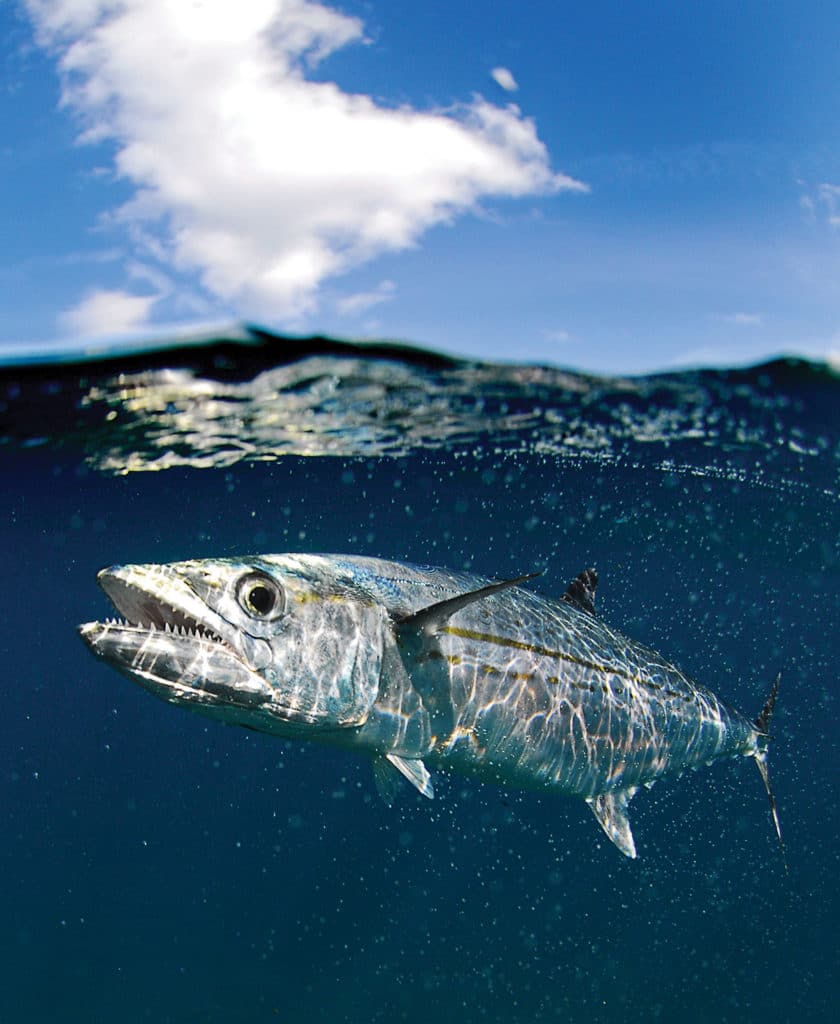
Sport Fishing‘s Prestigious International Panel of Experts
Northeast
Mike Fahay, Sandy Hook Marine Lab, New Jersey
Southeast
Ray Waldner, Ph.D., Palm Beach Atlantic University, Florida
Gulf of Mexico
Bob Shipp, Ph.D., University of South Alabama
West Coast
Milton Love, Ph.D., UCSB, California
Far Pacific
Ben Diggles, Ph.D., Queensland, Australia
Bluewater Pelagics
John Graves, Ph.D., Virginia Institute of Marine Science
CHALLENGE OUR EXPERTS (And Win Up to 10,800 Yards of Line!)
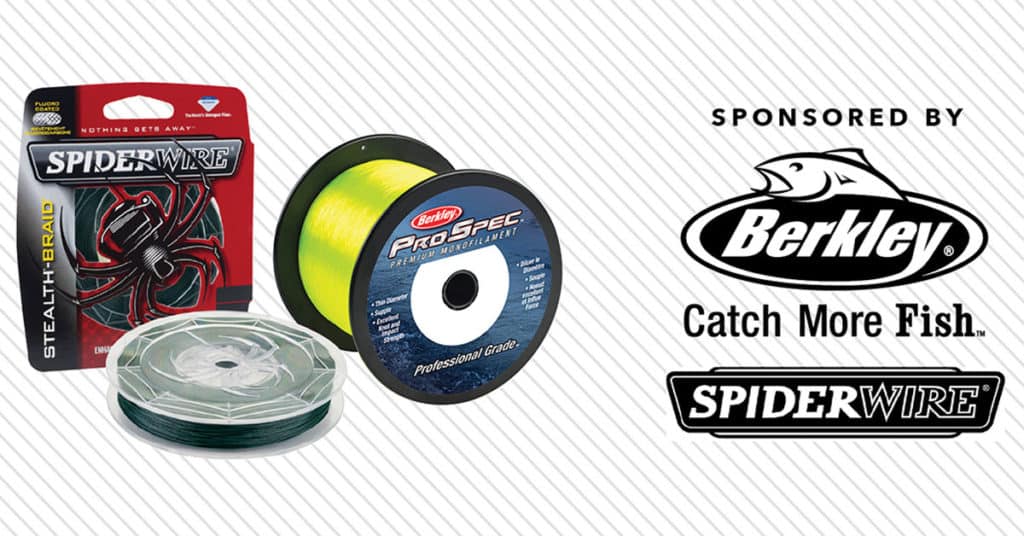
Send in your question and any relevant photos of your mysterious catch or observation for our experts’ ID and feedback. If we publish your question and you have a shipping address within the United States or Canada, you’ll win a 3‑pound spool of Berkley Pro Spec ocean-blue or fluorescent-yellow monofilament (1,000 to 10,800 yards, depending on line strength) or a 1,500‑yard spool of Spiderwire Stealth braid up to 100‑pound‑test! Send questions and images via email to fishfacts@sportfishingmag.com (include your hometown) or via post to Sport Fishing Fish Facts, 460 N. Orlando Ave., Suite 200, Winter Park, FL 32789.
